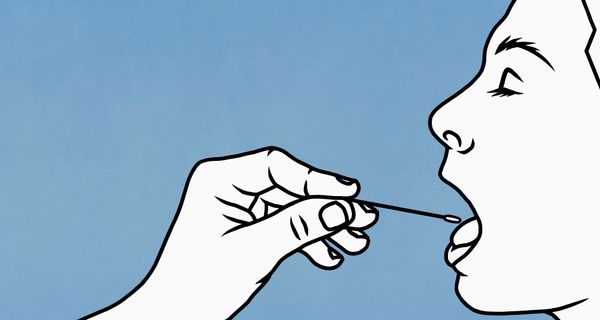We’re here to guide you through the coronavirus pandemic. Sign up to the Life newsletter for daily tips, advice, how-tos and escapism.
Loss of smell and taste is one of the three key symptoms of Covid-19 that people are urged to be aware of. It’s pretty common – a study of 24,000 people with the virus found 25% lost their ability to smell.
Other viral infections – including different forms of coronavirus – have also been known to cause a loss of smell and taste. With the common cold, for example, people will get infected, have a blocked or runny nose and their senses will be numbed for a few days. When the symptoms disappear, their sense of smell and taste is quickly restored.
With Covid-19, people aren’t showing those classic signs of a stuffy nose but are still losing their sense of smell. And in some cases, their sense of smell and taste is being distorted even after they recover from the virus. Some may be left with permanent smell loss – although we don’t know exactly why or how many.
Experts have believed for a while now that the virus enters the nasal tissues through an enzyme called the angiotensin converting enzyme II (ACE-2) receptor – and then causes temporary damage to the smell nerves, which results in a loss of smell, and subsequently a loss of taste.
A new study published in the European Respiratory Journal makes a case for this. Scientists analysed tissue removed from 23 patients’ noses during surgery and discovered extremely high levels of ACE-2 in the area of the nose responsible for smelling.
Researchers believe the enzyme is the ‘entry point’ that allows coronavirus to get into the cells of the body and cause an infection.
And with the nose being a key route for the virus to infiltrate the body and spread, targeting this part of the body could result in more effective treatments, they said. Could a nasal spray one day stop Covid-19 in its tracks? It’s possible.

The team from Johns Hopkins University School of Medicine in Baltimore in the US, analysed tissue samples from the back of the nose of 23 patients, removed during endoscopic surgical procedures for conditions such as tumours or chronic rhinosinusitis, an inflammatory disease of the nose and sinus. They also studied biopsies from the trachea (windpipe) of seven patients. None of the patients had been diagnosed with coronavirus.
In the lab, the researchers used fluorescent dyes on the tissue samples to detect and visualise the presence of ACE2 under a microscope and compare levels of ACE2 in different cell types and parts of the nose and upper airway.
They found the most ACE2, by far, on the lining cells of a very specific area at the back of the nose where the body detects smells. The levels of ACE2 in these cells was between 200 and 700 times higher than other tissue in the nose and trachea, and they found similarly high levels in all of the samples, regardless of what type of condition the patient had.
Co-author and research associate Dr Mengfei Chen said: “This technique allowed us to see that the levels of ACE2 – the Covid-19 ‘entry point’ protein – were highest in the part of the nose that enables us to smell. These results suggest that this area of the nose could be where the coronavirus is gaining entry to the body.”
The area at the back of the nose where the body detects smells, called the olfactory epithelium, is “quite an easy part of the body for a virus to reach”, added Dr Chen. “It’s not buried away deep in our body, and the very high levels of ACE2 that we found there might explain why it’s so easy to catch Covid-19.”
Co-author Professor Andrew Lane, director of the division of rhinology and skull base surgery, added: “We are now doing more experiments in the lab to see whether the virus is indeed using these cells to access and infect the body. If that’s the case, we may be able to tackle the infection with antiviral therapies delivered directly though the nose.”
Professor Tobias Welte, an expert in pulmonary medicine and director of the Department of Pulmonary and Infectious Diseases at Hannover University School of Medicine, Germany, said the finding needs to be confirmed but it offers “possible new avenues for treating the infection”.
The nose could also help us tell our symptoms apart from other illnesses this winter – like cold and flu. A study, published in the journal Rhinology, compared how people with loss of smell and taste (anosmia) from Covid-19 differed from those with other causes of upper respiratory tract infections and found smell loss was “much more profound” in Covid-19 patents.
For the study they carried out smell and taste tests on 10 Covid-19 patients, 10 people with bad colds and 10 healthy people. Distinguishing features of smell loss caused by Covid-19 included being able to breathe freely, not having a runny or blocked nose, and being unable to detect bitter or sweet tastes.
“It was this loss of true taste which seemed to be present in the Covid-19 patients compared to those with a cold,” said lead researcher Professor Carl Philpott, from University of East Anglia’s Norwich Medical School.
Smell and taste tests could be developed for fast Covid-19 screening, which could be used in primary care and emergency departments, he suggested.
People who lose their sense of smell or taste are currently advised by the NHS to self-isolate for at least 10 days.
“Although such tests could not replace formal diagnostic tools such as throat swabs, they could provide an alternative when conventional tests are not available or when rapid screening is needed – particularly at the level of primary care, in emergency departments or at airports,” said Prof Philpott.
It’s previously been suggested that the Covid-19 virus affects the central nervous system, based on neurological symptoms developed by some patients.
“Our results reflect, at least to some extent, a specific involvement at the level of central nervous system in some Covid-19 patients,” said Prof Philpott. “It is particularly interesting that Covid-19 seems to particularly affect sweet and bitter taste receptors, because these are known to play an important role in innate immunity.”



